Lhasa - Kathmandu Tour
Trip
Overview
Trip
Highlights
-
The Visit of Lhasa which is rightly one of the most featured and dreamt-about cities in the world.
-
The Drepung Monastery is known as the most important monastery of Gelugpa in Tibetan Buddhism.
-
Summer Palace of the Dalai Lamas , is a short distance away in the western part of town.
-
Sera Monastery is one of the 'great three' Gelukpa university monasteries of Tibet.
-
Country
Nepal -
Duration
4 Days -
Difficulty Level

-
Accommodation
Overnight at the Hotel -
Guide
English Speaking Nepali Tour Leader
Route
Itinerary
Breakfast at hotel.
Transfer to the airport for flight to Tibet's Lhasa. Upon arrival at Gongar Airport, meet and drive to Lhasa for approximately 1 hour. Rest day at leisure. Lhasa is rightly one of the most featured and dreamt-about cities in the world. This is not only because of its remoteness, its high altitude at 3,650 meters (11,975 feet) means limited accessibility, but also because of its impressive heritage of over a thousand years of cultural and spiritual history that has helped to create the romantic and mysterious Tibetan religion.
Differing from the inland cities and other places in Tibet, Lhasa is unique with an allure all of its own. In the Tibetan language, Lhasa means the Holy Land or the Buddha Land. It is the center of Tibet's politics, economy and culture. The splendor and grandeur of the Potala Palace in Lhasa remains a world-famous symbol of the enigmatic power of politics and religion in this region.
Overnight at the hotel.You will be engrossed with full day sight seeing tour to Potala Palace, Jokhang Temple, Barkor (Local) market.
Potala Palace: The Potala, one of the most famous architectural works of the world, sits on top of the Red Hill in Lhasa. In the 7th century, after the Tibetan King Songtsen Gampo's married Princess Wencheng of the Tang Court, the Palace was built to provide the Tibetan court with a place of worship and meditation. In the mid-17th century, it was re-built by the 5th Dalai Lama to its present size, and became the Winter Palace of the Dalai Lamas.
Jokhang Temple: Jokhang Temple, situated in the center of the old section of Lhasa called Barkhor, was built in the mid-7th century A. D. It was later extended by successive rulers, and has now become a gigantic architecture complex. Located in the east, and facing the west, Jokhang is a four storied Temple with splendid golden roofs. Its architecture features art from the Tang Dynasty but also assimilated many features from both Nepalese and Indian Buddhist Temples. The murals in the temple depict the life stories of historic and religious characters. The temple houses many historical relics, including statues of King Songtsen Gompo, Princess Wencheng, Princess Bhrikuti Devi (Nepalese), "Princess Willow" (a tree) and "The Uncle-Nephew Alliance Tablet." Jokhang is Tibet' s spiritual center, and the holiest destination for Tibetan Buddhist pilgrims. It houses a sitting of statue of Shakyamuni when he was 12 years old. The circular Barkhor Street has innumerable shops, and wayside peddlers intermingle with devotees walking clockwise around the Jokhang. An evening walk (Kora) around the Jokhang Temple together with the Tibetan pilgrims is a lifetime experience.
Barkhor Market: Walk along the Barkhor street that circles the Jolkhan and you are in the heart of the old Lhasa with its narrow streets white- washed stone homes, window framed in black and brightly painted woodwork and almost everyone has got something to sell over there. T surphu (Tuling Churba Gompa), lies northwest of Lhasa, just off the main Lhasa.
Overnight at the hotel.Breakfast at the hotel.
Full day tour of Sera Monastery and nunnery. Drepung Monastery.
Sera Monastery is one of the 'great three' Gelukpa university monasteries of Tibet. The original monastery was in Lhasa, Tibet, about 5 km north of the Jokang. Sera was founded in 1419, by Jamchen Chojey (Sakya Yeshe), a disciple of Tsong Khapa. It is housed for more than 5,000 monks in 1959.
Although badly damaged, it is still standing and has been largely repaired. It now houses a few hundred Buddhist monks. After the Chinese invasion of Tibet and the destruction of the majority of the monasteries in Tibet, Sera monastery was reformed in Bylakuppe, India, near Mysore. Because none of the monks of the Ngagpa Dratsang (Tantric College) survived the invasion, only the Sera Mey College and Sera Jey College were reformed in India.
Drepung Monastery: Situated at the foot of the Mountain Gambo Utse, 5 kilometers from the western suburb of Lhasa, the Drepung Monastery is known as the most important monastery of Gelugpa in Tibetan Buddhism. It is considered one of the 'Three Great Monasteries' (the other two are the Ganden Monastery and the Sera Monastery. Covering an area of 250,000 square meters, it held 7,700 monks in total and possessed 141 fazendas and 540 pastures in its heyday, and is the largest-scale monastery among the ones of the same kind. Seen from afar, its grand, white construction gives the monastery the appearance of a heap of rice. As such, it was given the name 'Drepung Monastery' which, in the Tibetan language, means Monastery of Collecting-Rice
Norbhulingka: Summer Palace of the Dalai Lamas , is a short distance away in the western part of town; and in Lhasa's lowelying surrounding hills are the imp Gelungpa monastwries of Sera and Drepung. In the palace there are many splendid murals painted by a Fourteenth Dalai Lama's painter. The topics of the murals are vast, including: Tibetan officials, Sakyamuni preaching under a Bodhi tree, Tibetan history.
Overnight at the hotel.Breakfast at the hotel. Drive to the airport for flight back to Kathmandu.
Meet
Our Experts
For Travel Agents
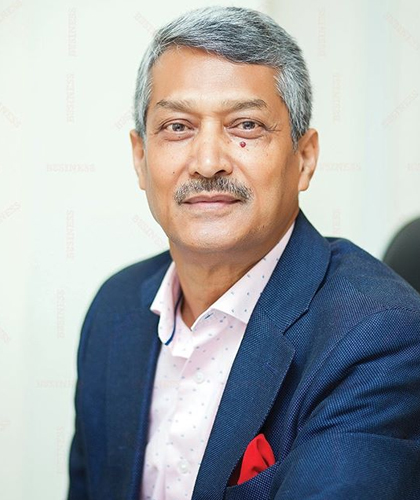
MR. BIJAY AMATYA
-
CEO, Founder
For Travellers
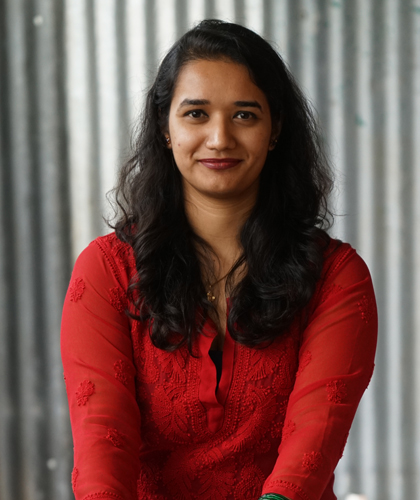
Ms. Neha AMATYA
-
Executive - Business Development
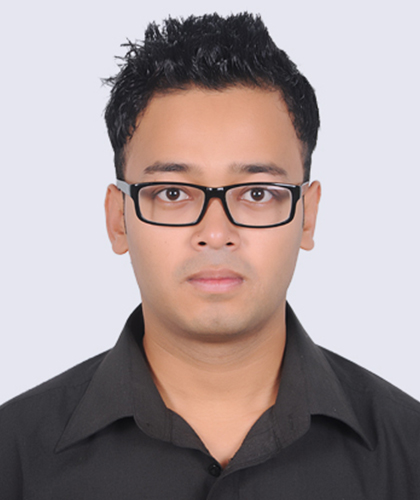
Mr. Deepak Gurau
-
Tour Officer
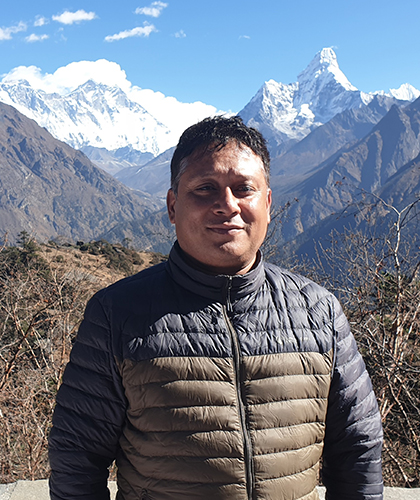
Mr. Sanjaya Moktan
-
Senior Manager tours
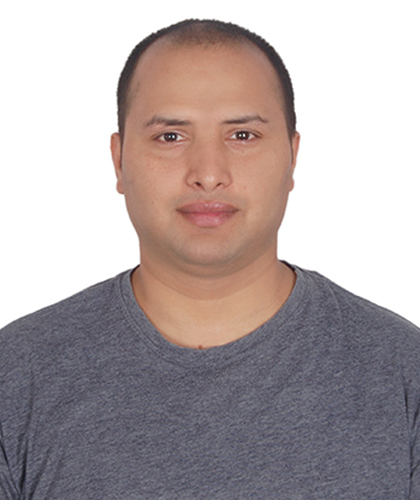
Mr. Saroj Bhatta
-
Tour Officer
Contact us
Base Camp, Basundhara, Kathmandu, Nepal
This email address is being protected from spambots. You need JavaScript enabled to view it.




 +977 1 5909976 / 77 / 78
+977 1 5909976 / 77 / 78